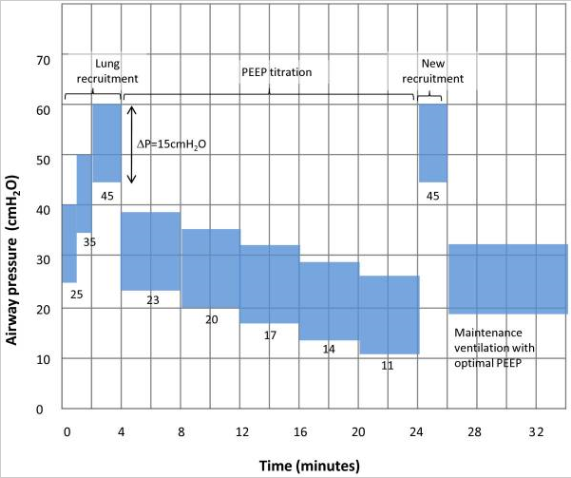“Liberation from mechanical ventilation in critically ill adults: an official American College of Chest Physicians/American Thoracic Society clinical practice guideline,” CHEST, 2017
Question: In acutely hospitalized patients ventilated more than 24 hours, should the spontaneous breathing trial (SBT) be conducted with or without inspiratory pressure augmentation? (1 of 6 questions addressed in the guidelines).
Study Type: Systematic review, meta-analysis, and multidisciplinary expert panel discussion
Methods: Panel co-chairs were selected by CHEST and ATS leadership. 14 panelists were then selected by co-chairs (7 pulm/CCM MDs, 4 CC MDs, 1 CC RN, 1 physical therapist, 1 pharmacist). Co-chairs drafted 6 key questions which were reviewed by the panelists. After finalization of search terms, inclusion/exclusion criteria, and databases to be searched, a systematic review was performed by a methodologist. Studies were screened, reviewed, and extracted by panelists. Final recommendations required 75% panel participation and 80% consensus.
Studies Included: Systematic reviews, RCTs, or observational studies comparing SBT with inspiratory pressure augmentation (PS or automatic tube compensation) to SBT without pressure augmentation in acutely hospitalized patients ventilated for >24 hrs. This review excluded patients who did not pass an initial SBT (i.e. the 1994 Brochard and 1995 Esteban RCTs we reviewed were excluded).
Outcomes: Duration of ventilation, ventilator-free days, successful SBT, extubation success (not requiring NIV or reintubation for 48 hrs), duration of ICU stay, short-term mortality (<60 days), and long-term mortality.
Results: 560 articles screened, 14 included in full text review, 5 included in qualitative synthesis, 4 included in quantitative synthesis. When the 4 trials were pooled through meta-analysis, conducting an SBT with pressure augmentation was more likely to be successful (84.6% vs 76.7%; RR 1.11; 95% CI, 1.02-1.18), produced a higher rate of extubation success (75.4% vs 68.9%; RR, 1.09; 95% CI, 1.02-1.18), and was associated with a trend toward lower ICU mortality (8.6% vs 11.6%; RR, 0.74; 95% CI, 0.45-1.24).
Caveats: Only 4 trials included in analysis (including studies from the Croatian Medical Journal and the American Journal of Medical Sciences), 3 of the 4 trials were single-center studies, all trials non-blinded.
ACCP/ATS Recommendation: “We suggest that the initial SBT be conducted with inspiratory pressure augmentation (5-8 cmH2O) rather than without (T-piece or CPAP). Conditional recommendation, moderate quality evidence.”
Comments:
– The 1997 study by Esteban is by far the most rigorous.
– To summarize, in parts 1 and 2 of this review we looked at landmark RCTs by Brochard and Esteban. I chose these trials because they are frequently mentioned on rounds and in textbooks when discussing liberation from MV. It’s important to be familiar with these trials and also to understand how their unique methodologies (only randomized patients who failed a 2-hr T-piece trial, step-wise decrease in PS, multiple SBTs per day) do not apply to usual practice today.
– In my opinion, the ACCP/ATS recommendations are sensible but it’s important to acknowledge that they are based on limited data (only 4 trials of varied quality) and that the confidence intervals for both SBT success and extubation success are underwhelming and very nearly include 1
– I think for the vast majority of patients, a PS trial is a reasonable strategy for SBTs. However, at NMH we see a lot of patients with COPD and CHF. In these patients, the 5 cmH20 of PEEP used with traditional PS SBTs may be physiologically relevant by easing work of breathing in the setting of dynamic hyperinflation (COPD) or improving LV performance by decreasing LV afterload (CHF). In these settings, passing a PS SBT may falsely reassure providers that a patient is ready to be liberated from MV. When caring for these specific patients, I still find T-piece trials very helpful. In the end, probably what matters much than the weaning strategy used is making sure you are performing daily SBTs in patients who are eligible, extubating those who pass, and aggressively treating reversible problems in those who fail. I would be interested in the opinions of attendings on this list.





